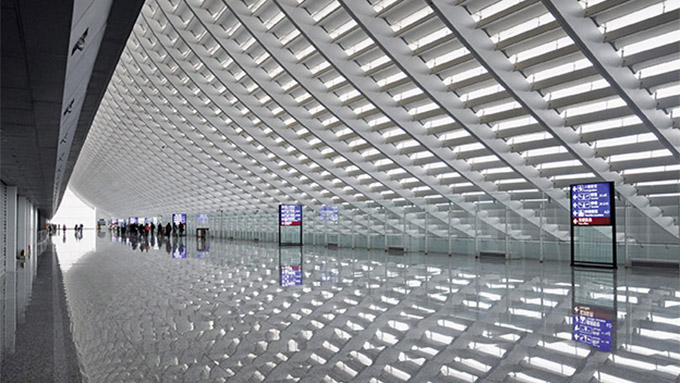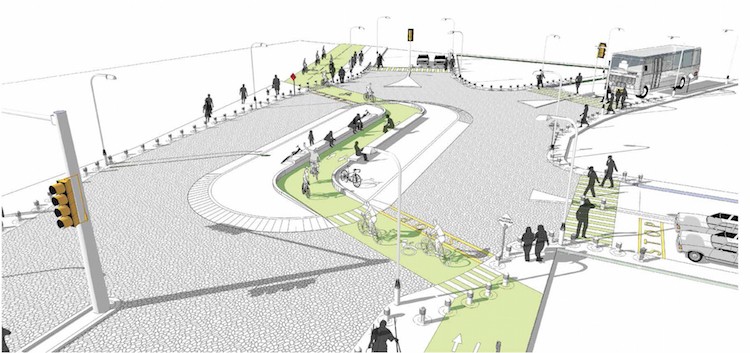
The Taiwan Taoyuan International Airport Terminal 1 was built in 1979 and its design was influenced by Eero Saarinen’s Washington Dulles International Airport. Featuring a prestressed structure that was considered advanced at that time, the old Terminal 1 was serving an estimated number of 5 million passengers annually. While still in good architectural condition, the […]
Read More… from Regeneration of Taoyuan International Airport, Terminal 1

The Union Territory of Diu is a beach town located on the western coast of India. The number of tourists it attracts every year is 16 times its population due to its landscape, environment and rich colonial heritage. The administration felt the need to change the current trends by envisioning Green and people-friendly development as […]
Read More… from Diu Bicycle infrastructure

In March 2011, the Great East Japan earthquake spawned a series of massive tsunamis that claimed thousands of lives and damaged many coastal areas of the country. Onagawa station, a terminal along the Ishinomaki Line, was among those affected. The station and nearby railway tracks were destroyed. Four years later, the reconstruction of the new […]
Read More… from Onagawa Station

This issue was initially titled “infrastructure” but that word feels increasingly obsolete in the lexicon of sustainability. There has been a substantive shift in the conversation this past decade for which we need new words. We have moved from a techno-centric view of Green to a quality-of-life perspective, where we plan better systems. The pride […]
Read More… from The New Network

More than just a 3D version of CAD, BIM is a key technological innovation that can help Asia’s burgeoning architecture, engineering and construction (AEC) sector become more productive and sustainable, especially on large-scale commercial and infrastructure projects. […]
Read More… from Make Your Own Rules with Generative Architecture

More than just a 3D version of CAD, BIM is a key technological innovation that can help Asia’s burgeoning architecture, engineering and construction (AEC) sector become more productive and sustainable, especially on large-scale commercial and infrastructure projects. […]
Read More… from Better Outcomes Through Appropriate Standards

More than just a 3D version of CAD, BIM is a key technological innovation that can help Asia’s burgeoning architecture, engineering and construction (AEC) sector become more productive and sustainable, especially on large-scale commercial and infrastructure projects. […]
Read More… from BIM—The GRAPHISOFT Way

More than just a 3D version of CAD, BIM is a key technological innovation that can help Asia’s burgeoning architecture, engineering and construction (AEC) sector become more productive and sustainable, especially on large-scale commercial and infrastructure projects. […]
Read More… from Together We are Shaping a Smarter Future for Construction

More than just a 3D version of CAD, BIM is a key technological innovation that can help Asia’s burgeoning architecture, engineering and construction (AEC) sector become more productive and sustainable, especially on large-scale commercial and infrastructure projects. […]
Read More… from A Powerful Game Changer: Building Information Modelling in Asia

Zirconwood is a form of thermally modified timber. First developed to improve the durability and performance of softwoods, it has recently been extended to boost the performance of hardwoods, allowing certain timbers to be used externally with no
additional protection. […]
Read More… from Making Wood Last

JS: I would like to ask you first about your goals as a young architect and how the Center for Environmental Studies at Princeton, which I understand you helped set up around 1972, came about. HF: All of us were heavily influenced by Rachel Carson and the first Earth Day, the photograph of Earth from space, realising for the […]
Read More… from Harrison Fraker

On 21 January 2016, the final Arup forum of the Green Initiatives series, Building for Tomorrow, explored the forces hard at work shaping more positive visions for tomorrow. Titled “How do we turn cities of today into cities for tomorrow?”, it compared two complementary views—one from science and the other influenced by anthropology, to educate […]
Read More… from Cities for Tomorrow



